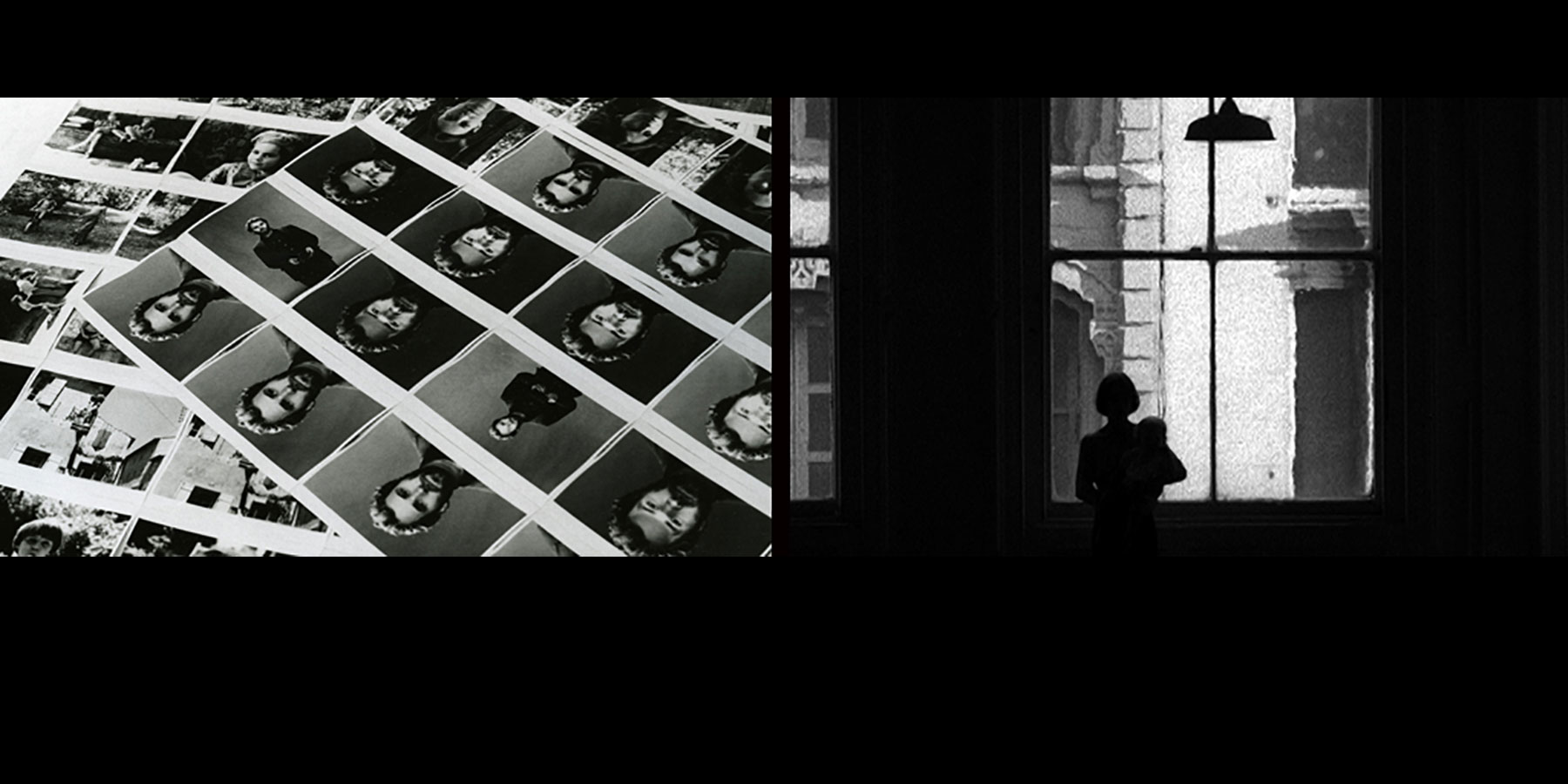The National Gallery of Art’s film program provides many opportunities throughout the year to view classic and contemporary cinema from around the world.
View the current schedule here.
stills from The Camera: Je or La Camera: I, 1977 (L) and Je, Nous, I or Eye, 2014 (R), courtesy Babette Mangolte
and BROADWAY 1602 UPTOWN & HARLEM, NEW YORK
The Cinema I: Mangolte Film
This short text written by Babette Mangolte on the occasion of her 2016 film series, tries to bridge the gap between the original intent of films conceptualized in the 1970s or the 1990s with what can be seen in those same films today.
Portraiture
I was very happy about the title Portraiture because many of my visual references come from painting and I have a concept of what portraiture entails over the ages. But it would have been impossible for me to think about portraiture for my films. When I shot most of those films in the 1970s, the preeminent artist who defined portraiture was Andy Warhol, both in films with his Screen Test and in his canvases with series like Marilyn, Elvis, Liz, and more.
My own photography interests lay with experimental theater, new dance and performance art, and that is what I was photographing. My other passion was to be a film spectator of primarily experimental films and videos, two different art forms in 1975 in New York City. My film world was centered on the films of Michael Snow and Ernie Gehr, whom P. Adams Sitney had famously named structuralist filmmakers, to distinguish them from the abstract expressionism of Stan Brakhage, the dominant filmmaker of his generation since the 1950s. I was also a great admirer of Andy Warhol and Jack Smith’s films. Arriving in New York in October 1970, I had seen Brakhage’s second film from his Pittsburgh trilogy Eyes. Brakhage’s free-form camera movements and subjective shots liberated me from the academic restrictions that I had learned in my film school in France. So I owe to Stan Brakhage the desire to try new methods in my cinematography and my filmmaking. But my heart as a film spectator was with Michael Snow’s Wavelength and La Région Centrale and with Ernie Gehr’s Serene Velocity. The “act of seeing” (an expression I borrow from Brakhage) was anchoring my life, and I organized my second film, The Camera: Je, La Camera: I, around the analysis of how we see.
To film the act of photography, I didn’t feel that exploring the photographer’s subject matter was interesting, as it is the norm in commercial photography, which didn’t interest me then. I wanted to simulate the action of capturing a photograph for the spectator of my film and to demonstrate the sensibility needed by the photographer to track and record the minute differences in facial expressions and how that motivates the moment of the shutter release that executes the taking of one photograph. My methodology was to explore the two preoccupations of the photographer that are about the representation of volume in the perspectives in the background spaces along with the expressivity of the figure in the foreground. It is the idea of the figure rather than the portrait that anchors my film The Camera: Je, La Camera: I. How the photographer composes the figure in the landscape is what I was after.
That is why I decided to shoot the film in two parts, isolating the component of the figure in the first part, and in the second part, dealing only with the space, which was New York City. I was interested in the shift from my neighborhood below Canal with south of Houston Street or Soho, and the area around New York University, north of Houston Street, which I had discovered while still living on Saint Mark’s Place. Looking up rather than at eye level is what Europeans do when they first arrive in New York, maybe to check that the sky is still blue although the high buildings leave you in their shadows on the sidewalks.
For the other short films included in the program, their motivation was very far from portraiture: Yvonne with Tape was testing Yvonne Rainer’s ability to be goofy and to improvise and look straight into the film camera, something that is not done in traditional filmmaking. (NOW) was testing the manipulation of objects, postcards at first, then empty cigarette packs, and suddenly the film shifts to moving those empty packs to build a pyramidal wall, like in a card game. The film concludes with caressing hands and sexual tease. (NOW) is an experimental narration about a series of activities, with no sound. Film Portrait of Richard Serra was shot during the making of The Camera: Je but I felt that the footage showed such complicity between Richard and me that I decided it was a film on its own. I shot the film title in 1977 but only finished the film in 2007 in digital video. Richard and I had met in Rome in 1972, and in January 1974 I moved into the building where he had lived and worked since the 1960s, so we were neighbors. We liked each other and the film shows that. For the last film Je, Nous, I or Eye, Us everything in it was shot in 1976 and 1977 but it was only edited in 2014 as an essay film on what subjectivity was then and is now.
In spite of all those hybrid references during the making of the films, I feel portrait is fitting as the main thread for the screening of those disparate films, as they share a reflection on what subjectivity is, which was at the center of my preoccupation then and still is now.
Next: Performance
